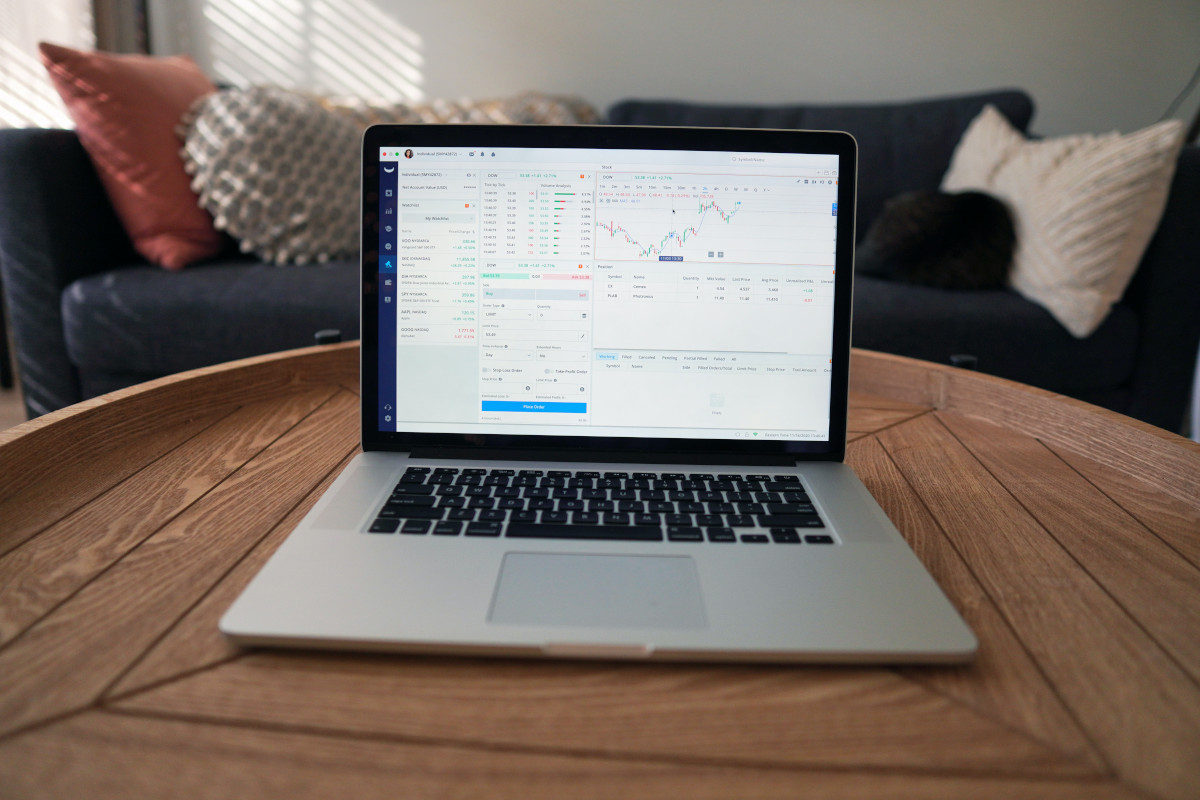Whether you’re considering buying or selling options contracts, step one is having an in-depth understanding of how they work. That means knowing the different situations in which you should use a call vs put option.
While one of these types of options contracts is for bearish stances, the other is for bullish stances. The consequences of accidentally choosing the wrong one can mean taking a loss in a position you otherwise would have earned a profit for. We’re here to help you avoid that as we demystify the difference between call options vs put options below.
We’ll fully break down the differences and explain which is better for which situations while offering examples of each type of contract. Let’s dive right into the put vs call option debate so you can get to work finding the right opportunity!
Featured Courses:
What is the Difference Between Call vs Put Option Contracts?
Before we get into the actual call option vs put option breakdown, we want to provide a bit of context for how stock options work in general.
A Brief Introduction to Options Trading
These are contracts you can trade on the stock market just as you would individual stocks. The key difference between stock options vs stock is that options present the right (but not the obligation) to purchase or sell an underlying security. When you buy options contracts, you’re not buying the actual company stock – at least, not yet.
Instead, you’re taking a stance as to how you suspect the underlying stock in question will perform over a certain time horizon. You’ll arrive at this conclusion based on technical and/or fundamental analysis.
And should your theory prove true, you can then exercise your option – granting you the right to either buy or sell the stock in question at a more favorable price point than it sits currently. This could mean buying the stock at a lower price than market value or selling it at a higher price than market value. That’s where the difference between call vs put option contracts lies – which we’ll get into shortly.
Now – if your theory proves incorrect, your contract expires worthless and you lose the premium you paid. That’s the nice thing about buying options contracts – you know going into the trade exactly how much you stand to lose. And typically, it’s not a whole lot – because you gain substantial leverage with options trading.
If you haven’t already, we encourage you to read our guide to trading stock options for beginners. You’ll learn more about the basics behind options trading, including what happens when your options expire, what it means to exercise an option, and the benefits of trading stock options. But for now, it’s time to get into what you came here for – to discover the difference between put vs call option contracts.
What are Call Options?
First, what are call options? These are financial contracts that give the option holder (buyer) the right, but not the obligation, to purchase a specified quantity of an underlying asset. These are usually stocks, but there are call options contracts for all sorts of commodities.
When you buy a call option, you’re earning the right to buy the stock at a predetermined price (called the strike price) within a specified time frame (until the option’s expiration date). The option holder pays a premium to the option writer (seller) for this right.
Call options are typically used by investors who believe the price of the underlying asset will rise before the option’s expiration date (bullish). If the asset’s price increases beyond the strike price, the option holder can exercise their right to buy the asset at the lower strike price and then sell it at the higher market price, netting a profit.
But if the asset’s price doesn’t surpass the strike price before the expiration date, the option holder can simply let the option expire, losing only the premium paid. So, how does the call option differ from the put option? Let’s take a look.
What are Put Options?
Put options, on the other hand, are financial contracts that give the option holder (buyer) the right, but not the obligation, to sell a specified quantity of an underlying asset at a predetermined price (the strike price) within a specified time frame (until the option’s expiration date). The option holder pays a premium to the option writer (seller) for this right.
As you can imagine, the stance you’d take for a put option is exactly the opposite of a call options contact. Here, you are banking on that underlying stock falling in value before the expiration date (bearish).
Should your theory prove true, you’re then able to sell that underlying stock at a premium in comparison to the current price. But if this doesn’t happen, again – you just let your contract expire worthless and lose the premium you paid for the contract.
What is Better a Call or Put Option?
Now that we’ve covered the difference between these types of contracts, what is better a call or put option? First, understand that one isn’t better than the other from the option buyers’ point of view. It all comes down to what stance you have on a given stock and choosing the right contract accordingly.
From the Options Buyer Point of View…
Call options might be better for you if you’re bullish on the underlying asset, expecting its price to rise. By buying a call option, you can potentially profit from the asset’s price increase without actually owning the asset.
This allows you to leverage your investment and control a larger position with a smaller capital outlay. However, the risk lies in the possibility that the asset’s price doesn’t rise above the strike price before expiration, causing you to lose the premium paid
Put options, on the other hand, might be more suitable if you’re bearish on the underlying asset, anticipating a price decline. You can profit from the asset’s price drop by exercising your right to sell the asset at the higher strike price.
Put options can also be used as a hedge to protect a long position in the underlying asset against potential losses. The risk here is similar to call options; if the asset’s price doesn’t fall below the strike price before expiration, you’ll lose the premium paid.
Before we get into some call vs put options examples to help you understand these differences with more context, we want to clarify that from the seller’s standpoint, one of these contracts is better.
From the Options Writer (Seller) Point of View…
Selling options contracts is another way to make money as an options trader – and in general, you actually have better odds of winning trades as the option’s writer. Your profit potential is lower, though, and your risk is much higher. In fact, your downside potential is virtually unlimited.
When selling call options, you’re essentially taking a neutral to bearish stance on the underlying asset. You collect the premium upfront, hoping that the asset’s price doesn’t rise above the strike price before the expiration.
The risk in writing call options, especially if they’re uncovered (you don’t own the underlying asset), is potentially unlimited since there’s no cap on how high an asset’s price can rise. If the asset’s price surges, you’ll be obligated to provide the asset at the strike price, which could lead to significant losses.
Selling put options, conversely, implies a neutral to bullish outlook on the underlying asset. You collect the premium, hoping that the asset’s price doesn’t drop below the strike price before expiration. The risk in writing put options is limited to the asset’s price potentially falling to zero. If the asset’s price plummets, you’ll be obligated to buy the asset at the higher strike price, leading to potential losses.
While you still take on great risk when writing put options, the risk is capped unlike call options – making puts a safer play. In general, we recommend new options traders stick with buying contracts as opposed to writing them for this exact reason.
You can learn more about how to sell stock options in our blog if you’re interested. But for now, let’s get into some call vs put options examples to help you further understand when to use which type of contract.
Call vs Put Options Examples to Help You Understand When to Use Which Type of Contract
Going through example trades helped us really grasp the intricacies between call option vs put option contracts when we first started learning stock options trading. So we’ll go through a call vs put options example below to really drive it home for you before bringing this conversation to a close. Let’s start with an example of when you’d use call options
Call Option Example
Let’s say you’ve been researching Company XYZ, which is currently trading at $100 per share. Your analysis includes reviewing its financial statements, recent news, and upcoming product launches. You believe that the company will announce impressive quarterly earnings in the next month, leading to a significant increase in its share price.
Based on this outlook, you decide to buy a call option – which will grant you the right to buy company XYZ stock at a discount to it’s future price. You purchase a call option on Company XYZ with a strike price of $105, an expiration date in two months, and a premium of $5 per share. The option contract represents 100 shares, so the total cost of the premium is $500.
As expected, Company XYZ announces stellar quarterly earnings, and its share price jumps to $120. Since the current market price is higher than the strike price of $105, you decide to exercise the option. You buy 100 shares of Company XYZ at $105 and immediately sell them at the market price of $120. Your total profit is:
($120 – $105) x 100 shares = $1,500 (gross profit)
$1,500 – $500 (premium) = $1,000 (net profit)
In this scenario, your research and bullish outlook on Company XYZ paid off, allowing you to profit from the call option trade. Nicely done! Now – let’s take a look at a put option example on the other side of things.
Put Option Example
Now, let’s consider another scenario. You’re still following Company XYZ, and its share price remains at $100. However, this time, your research indicates that a key competitor is about to launch a groundbreaking product that will directly challenge Company XYZ’s market share. You believe that this development will cause Company XYZ’s stock price to fall within the next month.
Based on this bearish outlook, you decide to buy a put option – which will allow you to sell shares at a premium in the future. You purchase a put option on Company XYZ with a strike price of $95, an expiration date of one month, and a premium of $4 per share. The option contract represents 100 shares, so the total cost of the premium is $400.
As you predicted, the competitor launches its groundbreaking product, and Company XYZ’s share price drops to $85. Since the current market price is lower than the strike price of $95, you decide to exercise the option. You sell 100 shares of Company XYZ at $95 (which you first need to purchase at the market price of $85) and immediately make a profit. Your total profit is:
($95 – $85) x 100 shares = $1,000 (gross profit)
$1,000 – $400 (premium) = $600 (net profit)
In this case, your research and bearish outlook on Company XYZ allowed you to profit from the put option trade.
Key Takeaways From These Call vs Put Option Examples
Both of these examples demonstrate how thorough research and market analysis can lead to successful call option vs put option trades, depending on your outlook for the underlying asset. It’s essential to stay informed and make informed decisions based on your unique perspective and investment objectives.
That means that coming up with a consistent, repeatable approach for how to analyze a company is key to seeing success as an options trader. That’s why we wrote a detailed guide on how to pick stock options for trading. There, you’ll learn all about using technical trading indicators and market research to your advantage.
But what if we told you there was an easier way to find winning opportunities on autopilot? It’s true. With the VectorVest stock analyzer software, you can save time while eliminating costly errors. The system has outperformed the S&P 500 by 10x for 22 years and counting – calling every major market move along the way.
At a glance, you’re told what to buy, when to buy it, and when to sell it. It doesn’t get much simpler than that! And if you’re struggling to find your next opportunity, you can pull up the system’s pre-configured screeners and identify stocks that align with your trading strategy.
Once you see the system in action, you’ll never go back to the old way. Get a free stock analysis today and see what’s been missing from your trading strategy!
Bringing Our Put vs Call Option Conversation to a Close
That concludes our breakdown of everything you need to know about put vs call option contracts. Chances are, you’ll use both of these throughout your journey as a new options trader – which is why having a solid grasp on the differences between call options vs put options is paramount to your success. Remember:
- Call Options: You are bullish and expect the price of the underlying stock to rise – allowing you to buy shares at a discount and flip them for a profit or continue holding for future gains.
- Put Options: You are bearish and expect the price of the underlying stock to fall – allowing you to buy shares and then sell them at a premium.
If you want to learn more about how to trade stock options, our blog has an array of helpful resources on the topic. You can learn about swing trading vs options trading, how to short a stock with options, how options affect stock price, risk management options trading, the difference between warrants and options, swing trading options, and taxes on options trading.
But now, it’s time to bring our conversation on call vs put options to a close. So, take what you’ve learned and apply it in your own trading strategy, whether you end up trading put vs call options!
Featured Courses:








Leave A Comment